News
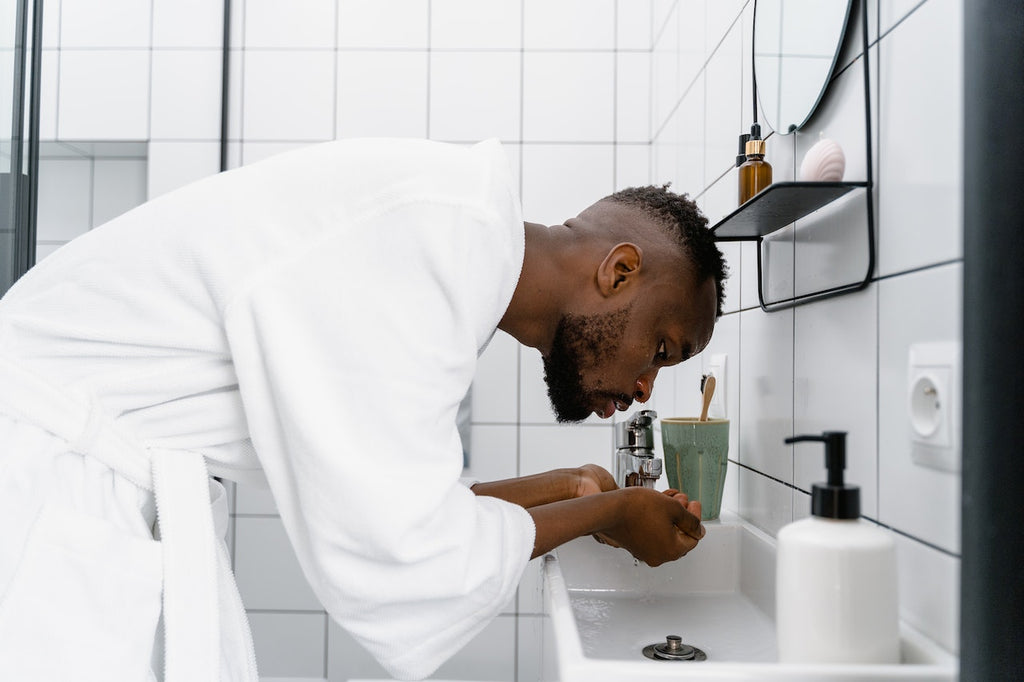
The Unfortunate Consequences of Washing Your Beard Wrong
Are you a bearded man? If so, then you know that having a beard can be a great way to show off your masculinity. But did you know that there is more to having a great beard than just letting it grow? In fact, one important thing you can do for your beard is to make sure you are washing it correctly.
Washing your beard may seem like a relatively simple task, but there is actually a right and a wrong way to do it. To keep your beard at its best, then you ensure you are using the right products and techniques.
Continue reading to learn more.
What Happens When You Don’t Wash Your Beard Right?
If you don't wash your beard regularly or properly, then it can affect both your hygiene and your beard's growth. Not washing your beard can cause a build-up of oils, dirt, and sweat, which can lead to skin irritation, beard dandruff, and more.
In addition to that discomfort and unkempt appearance, not washing your beard can also stunt its growth. This is because the hair follicles can become clogged, preventing them from receiving the nutrients they need to grow.
How Can You Improve Your Beard Hygiene and Growth?
The best way to improve your beard's hygiene and growth is to use haircare products that are specifically designed for beards. Look for products that contain ingredients like minoxidil and tugain, which have been shown to promote beard growth.
In addition to using the right products, it's key to make sure to wash your beard regularly. Aim to wash it at least once a week, using lukewarm water and a mild cleanser. Gently massage the cleanser into your beard to reach the skin beneath.
What Should You Consider When Washing Your Beard?
When it comes to washing your beard, there are some things to take into consideration in order to ensure you are doing it properly. Here are some of the points to keep in mind:
- Beard Wash Approach. It's paramount to decide on an approach. Are you going to use a traditional shampoo and conditioner or a specialized beard wash? If you opt for the latter, make sure you are using a product that is designed for beards and not just your head hair.
- Water Temperature. Next, you need to think about the water temperature. It is important to use lukewarm water when washing your beard, as hot water can strip away the natural hair oils that help to keep it healthy. If you are using a beard wash, however, you can get away with using warmer water to loosen any dirt and grime that's trapped in your beard.
- Washing Frequency and Timing. It is generally recommended that you wash it two to three times per week. Granted, this may need to be increased or decreased depending on your individual beard and skin type. Timing is also important, as you don’t want to wash your beard too close to bedtime, as this can make it a little more difficult to style in the morning.
Conclusion
It is extremely important to wash your beard regularly and properly in order to maintain good hygiene. Not only will this keep your beard clean and free of bacteria, but it will also help to ensure that your skin is healthy and free of irritation.
Want to improve your beard growth? Tugain 10 provides 12.5% minoxidil, tugain 10%, and liquid and tugain foam 10% products to stimulate hair growth. Try it out today!
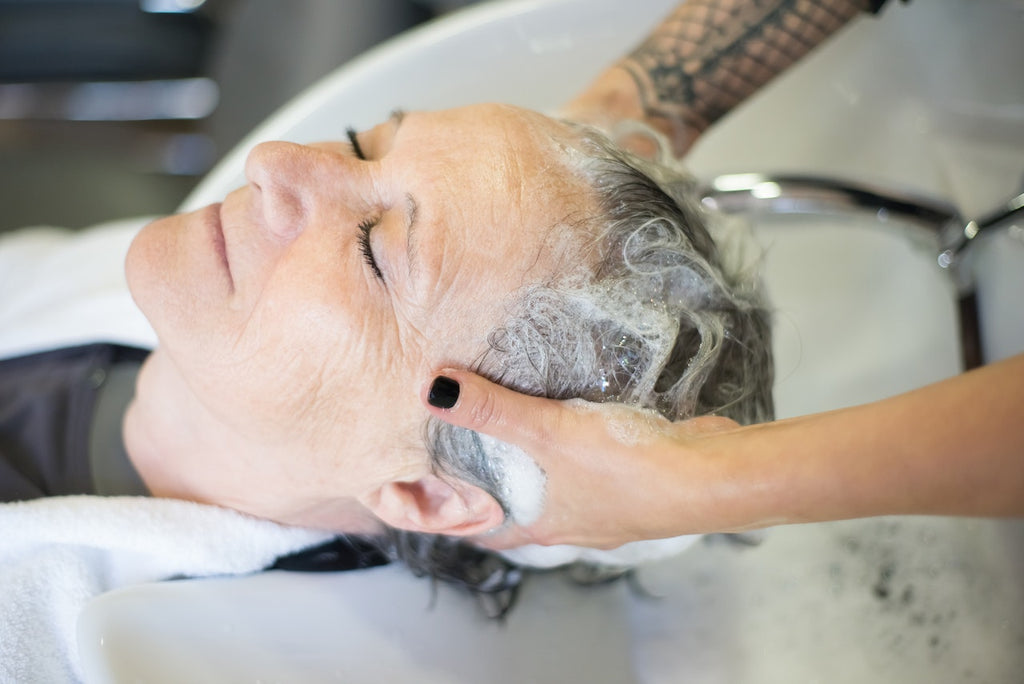
Combatting and Preventing Hair Loss as Soon as Possible
Hair loss can be a very distressing and emotionally difficult experience for both men and women. It can cause feelings of low self-esteem, anxiety, and depression. There are several causes behind hair loss, ranging from genetic factors to medical conditions. While hair loss can be a cosmetic concern, it can also be an indicator of an underlying health condition.
There are a number of different treatments available for hair loss, including medication, surgery, and lifestyle changes. However, it is often best to try and slow down hair loss from occurring in the first place.
Here are some ways of combatting and preventing hair loss:
1) Look for Signs of Hair Loss
The first step in preventing hair loss is to be more aware and alert of the signs and symptoms. This will help you to identify the problem early and take action accordingly. The most common sign of hair loss is a receding hairline, where the hairline starts to move and make the forehead appear bigger. Other signs include thinning hair, bald patches, and hair loss on the scalp.
2) Consider Physical Exams
It is important to consider physical exams when you are experiencing hair loss. This is because physical exams can help to rule out any underlying medical conditions that may be causing hair loss. The doctor will take a thorough medical history and may also recommend certain tests, such as blood tests and scalp biopsies.
3) Use Shampoos and Conditioners
Many different shampoos and conditioners are formulated to help with hair loss. These products can be found in many health food stores and can be used to help with the treatment of hair loss. Try to be meticulous about the ingredients being used to ensure that they wouldn't further the possibilities of hair loss.
4) Get Your Diet in Order
One of the best ways to treat hair loss is to make sure that you are eating a well-balanced diet. Eating a diet that is rich in protein and vitamins can help to promote healthy hair growth. In addition, it is important to make sure that you are getting enough water. Drinking plenty of water can help to keep your scalp hydrated and can also help to promote healthy hair growth.
5) Steer Clear of Stress
Stress can actually be a major contributor to hair loss. If you are under a lot of stress, you may discover that your hair is falling out in clumps. One of the best ways to treat hair loss is to make sure that you are managing your stress. This can be done through relaxation techniques such as yoga or meditation. Getting a lot more sleep is recommended as well.
6) Look into Hair Loss Treatment
There are many different hair loss treatments available on the market today. However, some of the best ones are minoxidil and tugain. These treatments can help to promote hair growth in plenty of men. Tugain, in particular, has been proven to be effective in treating hair loss and can help to prevent hair loss.
Conclusion
Hair loss is quite a common issue that can cause a great deal of stress and insecurity. Fortunately, there are also many treatments and prevention methods available. If you are concerned about hair loss, look into the possibilities.
Hoping to combat and prevent hair loss? Tugain 10 provides 12.5% minoxidil, tugain 10%, and liquid and tugain foam 10% products to stimulate hair growth. Try it out today!
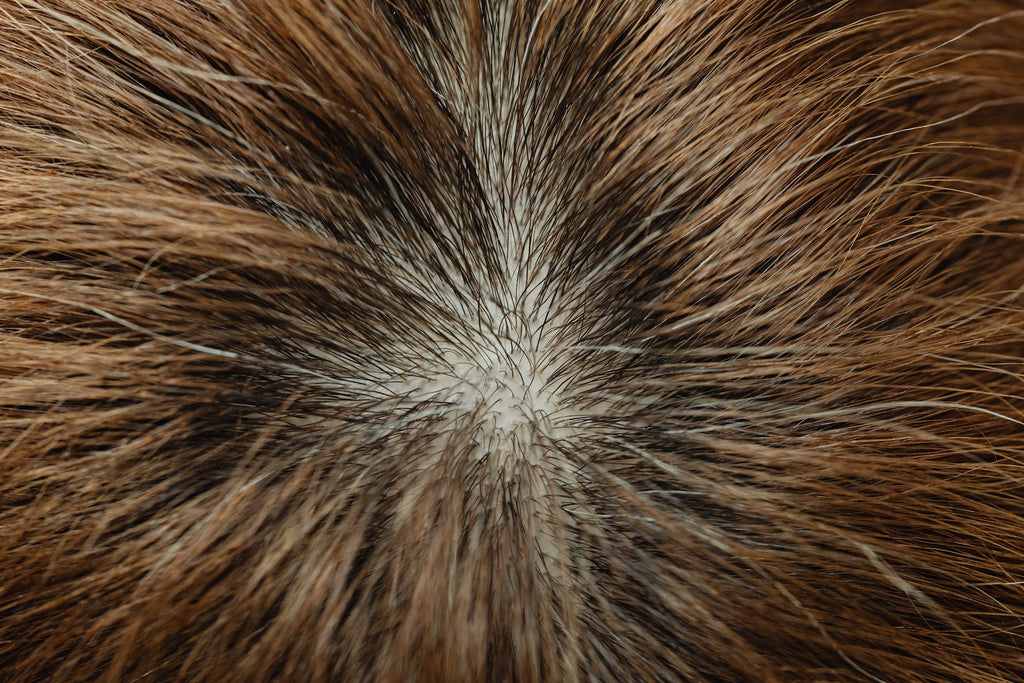
Minoxidil Effects: How Long Before it Starts Working? - Part 2
Hair loss is an issue that affects both men and women. While there are many causes of hair loss, one of the most common is genetic hair loss, also known as androgenetic alopecia. This type of hair loss is characterized by a thinning hair on the crown of the head and a receding hairline.
There are treatments available for genetic hair loss, one of the most popular being minoxidil. Minoxidil is a medication that is applied topically to the scalp and works by increasing blood flow to the hair follicles and by promoting hair growth. But how effective is Minoxidil? Let's continue our discussion on Minoxidil's effects and how you can benefit from it.
How Effective is Minoxidil?
Minoxidil is thought to be most effective for people who have started to lose their hair recently and who have small areas of hair loss. In fact, there have been quite a number of studies conducted exploring the effects of Minoxidil. In a study of 984 men with genetic hair loss, minoxidil was shown to be effective in the treatment of hair loss in men. The study found that minoxidil was most effective in men under the age of 40 and that the medication was less effective in men over the age of 40.
Another study looked at the effects of minoxidil in women with hair loss. The study found that minoxidil was effective in the treatment of hair loss in women. The study found that minoxidil was most effective in women who used the 5% solution and that the medication was less effective in women who used the 2% solution.
Minoxidil is generally well-tolerated but can cause side effects such as scalp irritation, dryness, and flaking. Minoxidil is not suitable for everyone, so it is important to speak to a doctor before using it.
How Minoxidil Affects Different People
Minoxidil is a medication that is used to treat hair loss. It is available as a topical solution, foam, shampoo, and oral forms. The formula is most effective for people with hereditary hair loss. It is also effective for people with alopecia areata, a type of hair loss affecting the scalp and other parts of the body.
While the solution is quite effective at mitigating the effects of hair loss, it's not suitable for everyone. You should speak to a doctor before using minoxidil if you:
- Are pregnant or breastfeeding
- Have a medical condition that affects the scalp
- Have a medical condition that affects hair growth
- Have had a recent hair transplant
- Are using other medication that could interact with minoxidil
How to Use Minoxidil for the Best Results
For best results when using minoxidil, you need to use it consistently and as directed by your doctor. Here are some tips to help you get the most out of this treatment:
- Use minoxidil twice a day, every day. It is important to use minoxidil consistently in order to see results.
- Apply minoxidil to the scalp, not the hair. Be sure to massage it into the scalp for full absorption.
- Do not wash your hair for at least four hours after applying minoxidil. This allows the medication to fully absorb into the scalp.
- Use a mild shampoo when you wash your hair. Avoid using harsh chemicals or heat styling, as this can damage the hair.
- Be patient. It can take several weeks to months to see results from minoxidil.
If you follow these tips, you will be on your way to achieving the best results from minoxidil. Be patient and consistent with your use of the medication, and you will eventually see the hair growth you desire.
Conclusion
If you are experiencing hair loss, minoxidil may be a good option for you. When used correctly, minoxidil can be a safe and effective treatment for hair loss. Talk to your doctor about the best way to use minoxidil and whether it is the right choice for you.
Don't let yourself get down due to hair loss. With Tugain 10's Minoxidil products, you can regain your confidence and that youthful hair growth you've always wanted. Our line of Minoxidil extra-strength products are made with 10% minoxidil concentration, which is perfect for your scalp, beard, and even eyebrows. Order Tugain 10 products today and boost your hair growth in no time.
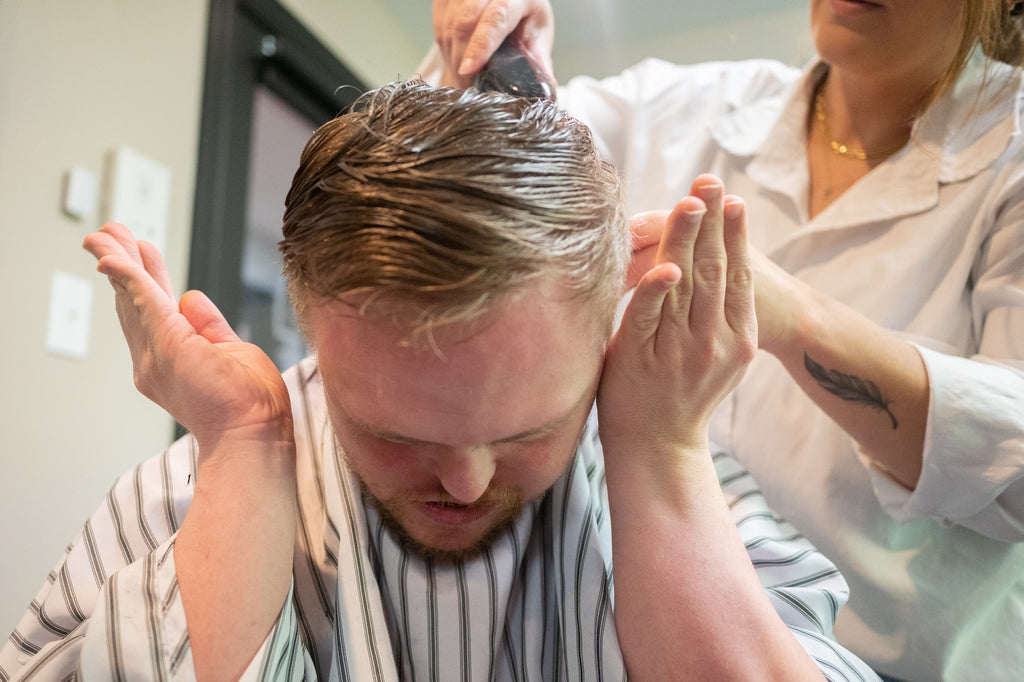
Minoxidil Effects: How Long Before it Starts Working? - Part 1
People from all over the world suffer from male- and female-pattern baldness. It's quite a prevalent condition that people just think of it as a normal part of growing old. While age and genetics do play a role in hair loss, there are ways to mitigate the symptoms and help you improve your hair growth. One such solution is the use of hair products containing Minoxidil, which is a medication used to treat hair loss. It's one of the two FDA-approved treatments for androgenetic alopecia or what's commonly known as female- and male-pattern baldness. The treatment doesn't work instantaneously and requires time to take effect. The question is, how long? Well, we're here to find out.
How Does Minoxidil Work?
Minoxidil was first introduced in the 1960s as a treatment for high blood pressure. It was found to have the side effect of promoting hair growth. Minoxidil was approved by the FDA for the treatment of pattern baldness in women in 1988 and for men in 1997. It is available in both topical and oral formulations.
Minoxidil is a vasodilator, meaning it's a substance that widens blood vessels, which is why it was first thought of as a treatment for high blood pressure. Back then, minoxidil's exact mechanism of action on hair growth wasn't fully understood. Now, however, it's one of the most effective hair loss treatments being used by many.
Essentially, the formula works by increasing blood flow to the hair follicles and promoting new hair growth. It is thought to work by prolonging the hair growth cycle and by increasing the thickness of the individual hairs.
How Long Does It Take for Minoxidil to Start Working?
There is no definitive answer to this question, as everyone experiences hair loss differently and responds to minoxidil differently. Some people may see results within a few weeks, while others may not see results for several months. Ideally, you can see results in as little as 4-8 weeks. For some people, however, it could take way longer than that. So if you're using minoxidil and not seeing any results, don't give up just yet. It may still take some time for the medication to start working.
If you're still not seeing any results after a few months of using minoxidil, then it may be time to consider other options. There are other medications available that may be more effective for you. Talk to your doctor about alternatives that may be available.
How is Minoxidil Used for Hair Loss Treatment?
Minoxidil is a medication that is commonly used to treat hair loss. It is available in both a topical solution and a pill form and is typically used twice a day. Minoxidil works by stimulating hair follicles and promoting hair growth. It is not clear how minoxidil works, but it is thought to increase blood flow to the hair follicles and promote the growth of new hair.
There are two ways that minoxidil can be used for hair loss treatment. It can be used as a standalone treatment, or it can be used in conjunction with other hair loss treatments. When used as a standalone treatment, minoxidil is typically applied twice daily. When used in conjunction with other treatments, minoxidil is usually applied once daily.
Conclusion
Minoxidil is used for hair loss treatment by slowing down the rate of hair loss and stimulating the growth of new hair. It is available in different strengths and formulations, and works differently from person to person. While it's an effective treatment, you shouldn't expect it to show any results in just a few days. Through consistent use and with the guidance of your doctor, you'll eventually see some improvement in your hair volume and scalp.
If you think Minoxidil is the kind of treatment for you, then Tugain 10 has the perfect solution. We bring you our Tugain 10% Minoxidil extra strength formula and other topical solutions to help you bring back that full head of hair you've always wanted. Tugain 10 products are designed to give you the best hair loss treatment possible. So, if you're looking for an effective and affordable hair loss treatment, then Tugain 10 is the right choice for you. Shop now and check out our featured products!
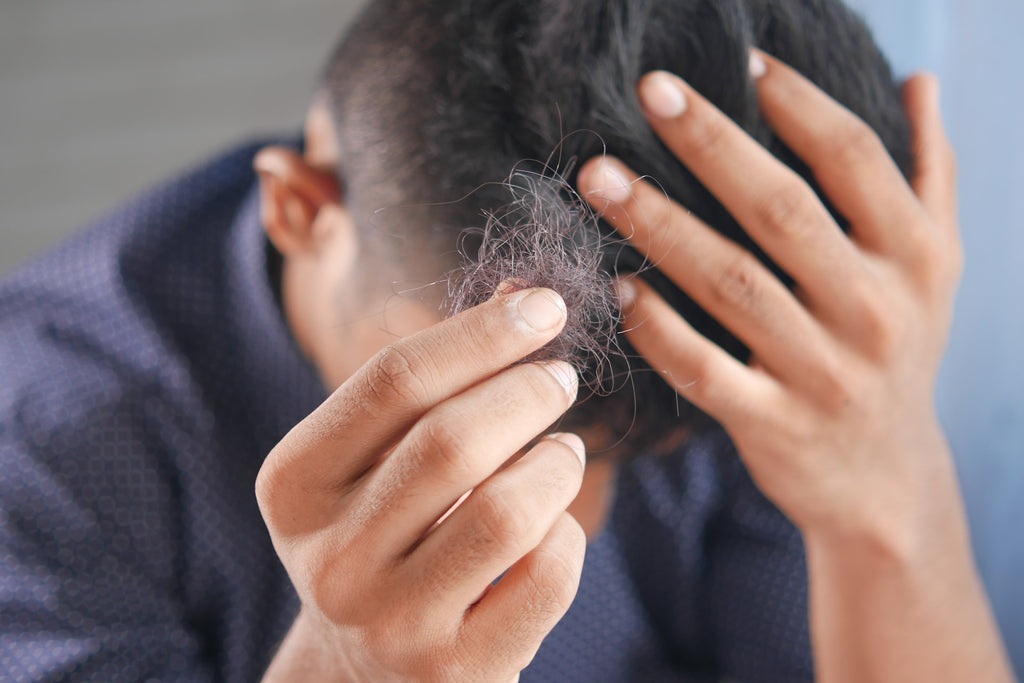
Is Minoxidil an Effective Way to Regrow Hair in Bald Spots?
Minoxidil will not regrow hair on bald spots. Instead, it will only work on active hair follicles. For example, men experiencing hair thinning will have a better chance of experiencing hair regrowth than those with a patchy or bald spot.
The drug works with healthy hair follicles that may require more than the usual dosage of vitamins and minerals to stimulate growth further. However, a vasodilator dilates blood vessels on the scalp, influencing hair growth.
How Does Minoxidil Promote Hair Growth?
Minoxidil’s efficacy in hair growth is not fully understood. However, the drug stimulates hair growth by improving blood flow and oxygen to the hair follicles. Additionally, it is known to increase the size of hair follicles, which can help promote hair growth.
The success of minoxidil use comes from the interaction it creates with sulfotransferase—the enzyme turning into salt, called minoxidil sulfate. The salt shortens the telogen or resting phase of the hair follicle, which triggers quicker hair growth.
If it shortens the telogen phase, it extends the anagen phase. As a result, people using minoxidil can experience a more prolonged period of hair growth. They will get improved hair density and a faster growth rate responsible for thicker and longer strands.
How to Use and Apply Minoxidil
Minoxidil is available as a topical solution, foam, or spray. It is applied once or twice a day, depending on the package instructions. It is best to apply minoxidil to the scalp when it is dry. For best results, use minoxidil for at least four months.
People may see results as early as eight weeks of use. Once you stop using minoxidil, hair growth will slowly return to its previous state. Minoxidil is available in 2%, 5%, and 10% concentrations. The higher the concentration, the more quickly it is likely to work.
Minoxidil is available over the counter and does not require a prescription. It is available in generic and brand-name forms. But first, consult an expert before using the drug to ensure safety and effectiveness.
Alternatives to Using Minoxidil to Alleviate Bald Spots
There are alternative methods to using minoxidil to alleviate bald spots. Since minoxidil can only influence denser, healthier, and longer hair, people can try these alternatives to see if they work for them. However, these alternatives are only for more extreme cases, not for premature balding.
1. Hair Transplant
A hair transplant involves taking some hair from the back of the head and using it to fill the balding area. The method can be very effective for people experiencing progressive hair loss. But it can result in a period of downtime.
2. Laser Therapy
Laser therapy is a newer treatment that uses a low-level laser device to stimulate hair growth. It can be helpful for people with mild hair loss. Meanwhile, the method can be effective, but it can also be expensive.
3. Micropigmentation
Micropigmentation is applying pigment to the scalp to simulate the look of hair, which is more beneficial for people experiencing progressive hair loss. The process is relatively simple and can be done in a single session.
Conclusion
Hair loss is a prevalent condition affecting men and women of all ages. It is a troubling condition that can cause self-esteem issues and make you feel less attractive. The good news is that there are many different hair loss treatments available, but the best treatment will depend on the cause of your hair loss.
Remember, hair loss is a common condition affecting men and women of all ages. If you are unsure what is causing your hair loss or are not satisfied with the results of your treatment, you should consult a dermatologist or other medical professional. It is a troubling condition that can cause self-esteem issues and make you feel less attractive.
Tugain10 aims to help people regain their confidence by providing a quick and easy solution against hair loss. For example, we help men with beard growth by providing products like 10 percent minoxidil, which is ideal for stimulating hair growth. Learn more about our products by browsing our website today.
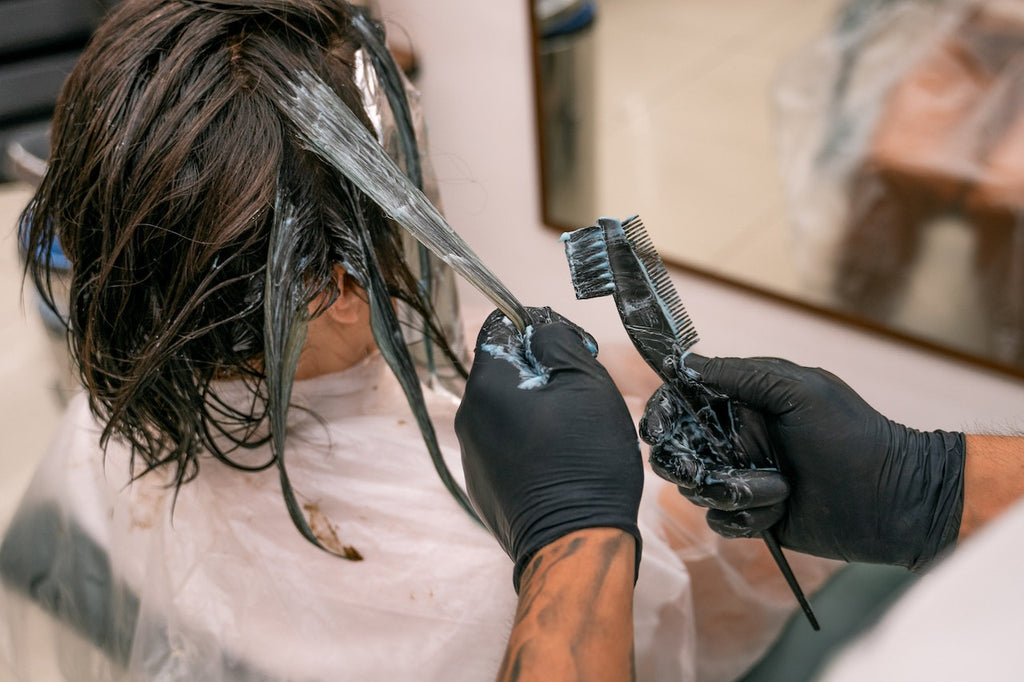
Is It Okay to Bleach Your Hair While Using Minoxidil
Minoxidil is a medication used to treat hair loss. It is available in both topical and oral forms. Many people use minoxidil to treat their hair loss, and it is generally considered safe. However, there is some concern that bleaching your hair while using minoxidil may increase the risk of side effects.
How Does Minoxidil Work in Treating Hair Loss?
Minoxidil works by increasing the blood flow to the hair follicles. This increased blood flow gives the follicles the nutrients they need to grow. In addition, minoxidil also helps to increase the size of the hair follicles. This increase in size allows for the growth of thicker and longer hair.
It should be noted that minoxidil is not a cure for hair loss. It is a treatment that can help to slow down the progression of hair loss and improve the appearance of thinning hair. Minoxidil is most effective in those with early stages of hair loss. It is not as effective in treating advanced stages of hair loss.
Does Minoxidil Affect Your Hair Color?
One common question that people ask is whether minoxidil affects hair color. The answer is that it can, but it is not common. Some people who use minoxidil may notice that their hair color changes. This is most likely to happen if you use minoxidil in a high concentration. The change in hair color is usually temporary and will go back to normal once you stop using minoxidil.
If you are concerned about minoxidil affecting your hair color, you can talk to your doctor or dermatologist. They can help you decide if minoxidil is right for you and offer advice on avoiding any unwanted side effects.
What Happens When You Bleach Your Hair While Using Minoxidil?
When you use minoxidil to treat hair loss, you may be wondering if it's okay to bleach your hair as well. Unfortunately, there is no easy answer to this question. While minoxidil is generally considered safe for most people, there is no definitive research on what happens when you combine bleaching with minoxidil use.
There are a few things to consider if you're thinking about bleaching your hair while using minoxidil. First, it's essential to know that minoxidil can cause skin irritation. If you have sensitive skin, you may be more likely to experience irritation when you combine bleaching with minoxidil use. Second, bleaching your hair can also cause irritation and dryness. This is especially true if you have already damaged hair.
If you're considering bleaching your hair while using minoxidil, you must talk to your doctor or dermatologist first. They can help you weigh the risks and benefits of bleaching and minoxidil use and make the best decision for your individual situation.
Final Thoughts
There is no definitive answer to the question of whether it is safe to bleach your hair while using minoxidil. Some experts say it is safe, while others say it may increase the risk of side effects. If you are concerned about the potential risks, you should speak with your doctor or dermatologist.
Get the best minoxidil products for your hair loss treatment from Tugain 10. Our 12.5% Minoxidil Extra Strength Topical Solution USP for Men is perfect for beards, scalps, and eyebrows. This formulation is almost three times stronger than the regular one and is good for one-month use. Shop now!
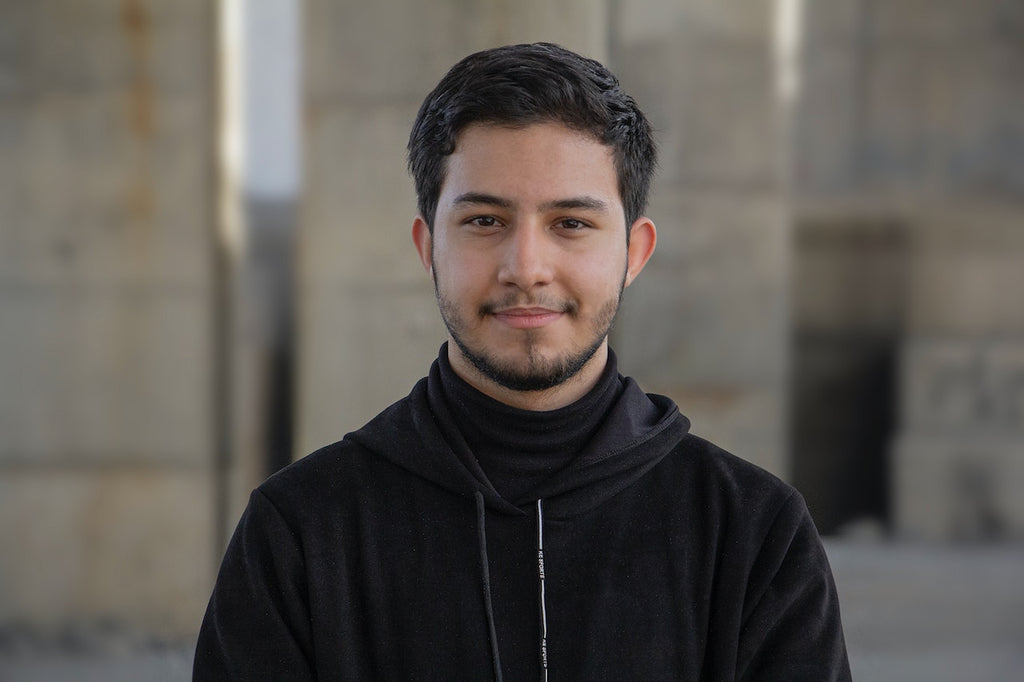
Does Stress Have a Definite Impact on Your Beard Growth?
Today's latest fashion trend is a well-groomed beard with robust growth and clipped lines. Men always experiment with various ideas to improve their beard development because it is thought of as a symbol of maturity and masculinity. Personal hygiene to mental wellness is only a few of the many requirements for an attractive beard. While utilizing the correct tools, such as beard oil and cream, will help you shape your beard, you also need to clear your head of any clutter and worry.
The Correlation between Stress and Beard Growth
You can experience the effects of stress in many different ways. It typically starts with mental exhaustion and brain fog and can lead to significant health issues like heart attack, high blood pressure, etc. But did you know that stress can also affect your beard and facial hair? Yes! Your beard's development is significantly impacted by stress. Stress causes your body to produce more cortisol, which interferes with hormone levels and prevents the healthy growth of your beard. Additionally, stress inhibits the delivery of vitamins and other nutrients to your hair follicles and slows the development of your beard.
Stress can also cause brain fog, which impairs your ability to concentrate and eventually slows facial hair growth. That said, you would benefit from being aware of the numerous causes of brain fog and how it impacts your well-being and beard development.
The thing is, stress must be completely avoided if you want to grow a healthy beard. While there are countless methods for lowering stress, the following are some typical treatments that are effective for the majority of people:
1. Get Enough Sleep
You barely ever find time to sleep if you are constantly involved in a lot of work and activities. However, getting enough rest and relaxation is crucial since it promotes healthy body functioning and raises testosterone levels. Sleep is therefore recognized as a stress-relieving strategy. Your body will produce cortisol at its highest level when your stress levels are low, which will promote healthy beard development.
2. Drink Lots of Water
A hydrated body keeps its fluid levels at a healthy level. This aids in reducing your tension and gives you a feeling of contentment. Additionally, maintaining hydration promotes blood circulation and guarantees that essential nutrients get to your skin. Your skin and beard's hair follicles are then revitalized, promoting healthy development.
3. Exercise Regularly and Meditate
Regular exercise and meditation help to lower stress by distracting your thoughts from bothersome problems. Your body and mind will both feel relaxed as a result of it. Additionally, it promotes blood circulation, ensuring that the hair follicles receive all vital nutrients. This nutrition promotes the growth of a healthy beard.
4. Avoid Brain Fog
Brain fog, a mental issue that affects your memory and concentration, is one of the most dangerous impacts of stress. You may prevent brain fog by making real self-care efforts, such as optimizing your food, getting enough sleep, and playing games. Here are some home remedies for brain fog that you can use to reduce stress and prevent brain fog.
Conclusion
Overall, different people have varied opinions about how stress might affect your way of life and your facial hair, but scientific evidence indicates that being under a lot of stress inhibits facial hair growth. Your sleep, eating, and other bodily functions are likely to suffer while you're under stress, and this directly affects your hair follicles. Therefore, it is advised to lower your stress levels and apply hair-friendly therapies to support your beard growth.
If you are looking for a great source of beard growth products, look no further than our amazing selections here at Tugain 10. We offer a wide range of options that would bring out the shine and style of your hair and beard with no challenge. Check out our online store for more of our hair and beard growth items and their prices.
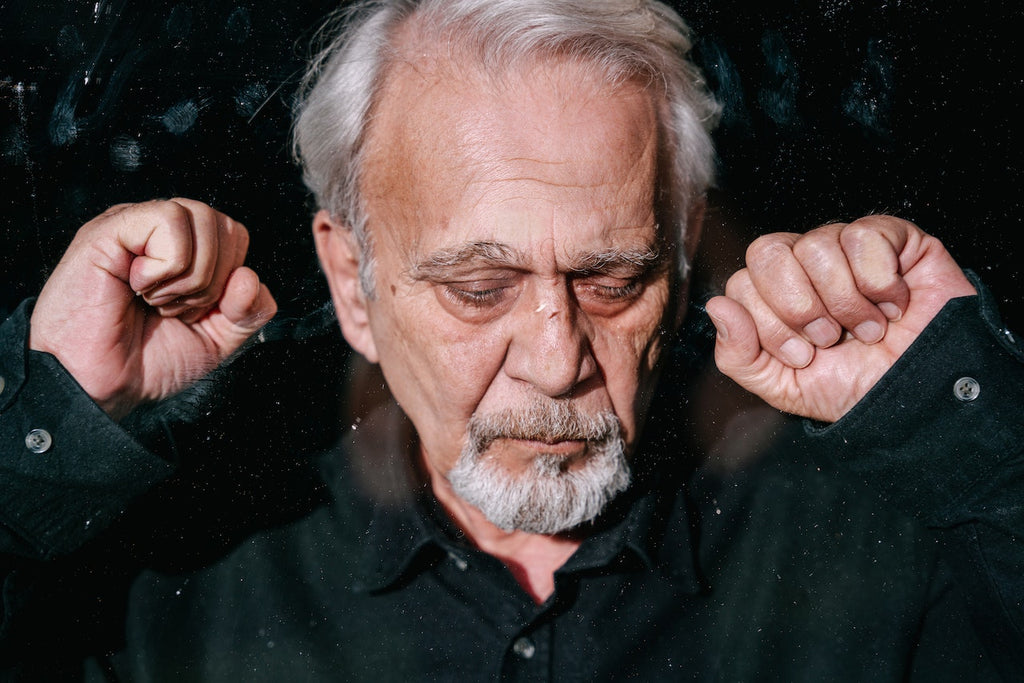
Why Should Men Consider Using Minoxidil against Hair Loss?
Minoxidil is a medication that is used to treat high blood pressure. It is a Food and Drug Administration (FDA)-approved product also used to promote hair growth in people with certain types of hair loss. As an over-the-counter drug, it becomes an effective solution to hair loss.
Therefore, as a younger age demographicstarts experiencing hair loss, using Minoxidil to trigger hair regrowth is a viable option to prevent total hair loss in men. But why should men consider using Minoxidil against hair loss? Here are some ideas.
1. Alleviates Pattern Baldness
It is a fact that pattern baldness is the most common type of hair loss in men. The chances of developing pattern baldness are higher in men as they age. It usually manifests on the center of the scalp, slowly thinning the hair around.
As men age, they become more susceptible to baldness. Older men may become categorized under Type III baldness, the worst strain of male pattern baldness. But if they start using Minoxidil early on, they can prevent pattern baldness from developing into severe hair loss.
2. Thickens Hair
Minoxidil is an effective hair treatment for thinning hair. It is the only FDA-approved hair loss treatment for men. The drug is an excellent choice for men suffering from thinning hair, especially those in their 20s and 30s.
Available in topical solutions, men can purchase Minoxidil products over the counter to prevent further hair loss. It is generally well tolerated. The most common side effects are scalp irritation and itching, but Minoxidil is a safe and effective treatment for hair loss.
3. Helps Fix Patchy Beard
Minoxidil is a beautiful remedy for patchy beards. It can help you grow a thicker beard by increasing the blood flow to your facial hair follicles. In addition, minoxidil can also help increase the size of the hair follicles, leading to thicker, fuller beard growth.
If you're interested in trying minoxidil to help with your beard growth, you must talk to your doctor first. Minoxidil is a medication, and it's crucial to ensure it's safe for you. Therefore, consulting with an expert is the first step to wellness.
4. Acts as Vasodilator
Minoxidil is a vasodilator. It works by widening the blood vessels and promoting blood flow. In other words, minoxidil can help you by increasing the blood flow to your hair follicles and making them grow faster.
It is important to note that minoxidil is not a cure for baldness, but it can help to slow down or stop hair loss. It takes time to see results from minoxidil, and it is not practical for everyone. However, it is worth trying if you are experiencing hair loss.
5. Offers Quick Results
Minoxidil is one of the fastest-acting hair loss treatments. It can take a few weeks to start seeing results, but some people see results in as little as two weeks. However, most people notice effects in their second to the fourth month of use.
Minoxidil is worth considering if you are looking for a hair loss treatment that offers quick results. Remember that it is not a cure for baldness. Instead, it slows down hair loss, but people will need to continue using it to see results.
Conclusion
Minoxidil is a very effective hair loss treatment that has been shown to improve hair growth and help people keep their hair. However, it is not a cure for baldness, and people will need to continue using it to see results.
Tugain 10 offers various Minoxidil products to help men regain their confidence along with their hair back. We have topical solutions with varying strengths to target hair loss problems in men, kickstarting regrowth on the scalp and beard growth. Check out our ten percent Minoxidil topical solutions and shop for other hair growth products on our website today.
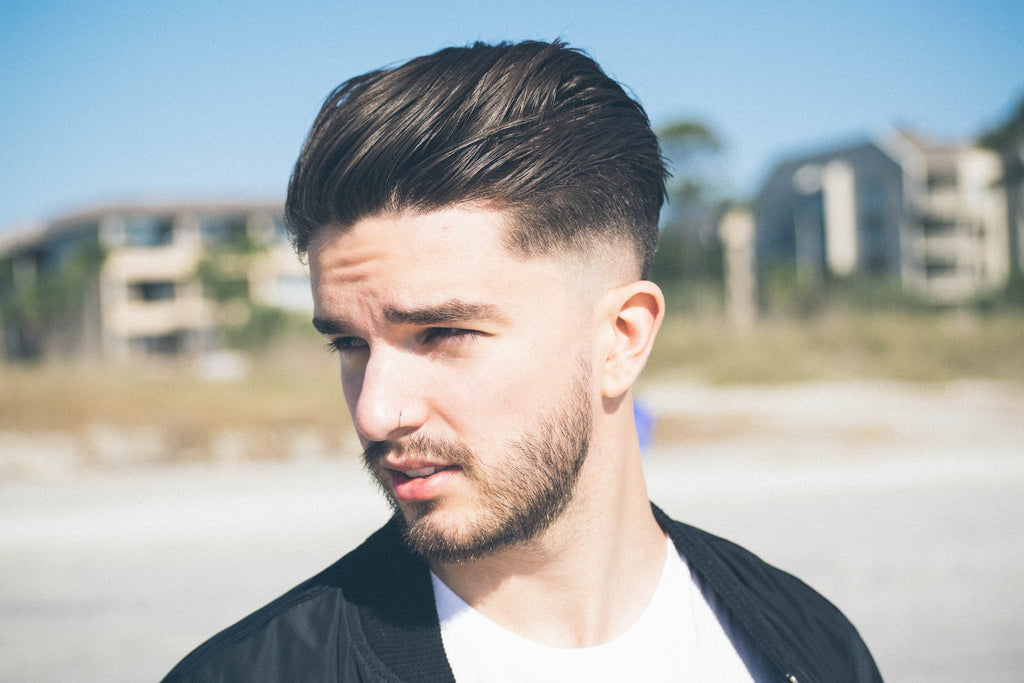
4 Common Beard Problems and How to Fix Them
Beards are becoming increasingly popular, but they’re not without their problems. From itchiness to beard dandruff, there are a number of common issues that can plague even the most well-groomed beard. Luckily, these problems are relatively easy to fix with the right products and a little know-how.
If you’re struggling with any of the following beard problems, read on for our advice on how to fix them.
Itchiness
One of the most common complaints among men with beards is itchiness. This is usually caused by dry skin underneath the beard, which can happen for a number of reasons. If you live in a dry climate, for example, the lack of humidity can cause your skin to become dry and irritated. If you’re not drinking enough water, that can also lead to dry skin.
Whatever the cause, the solution is the same: you need to hydrate your skin. The best way to do this is to use good-quality beard oil. Beard oil not only moisturizes the skin but also helps to condition the beard hair, making it softer and less likely to cause irritation.
Another helpful tip is to avoid using harsh soaps on your face. Opt for a gentle, natural cleanser that won’t strip away the natural oils that protect your skin.
Beard Dandruff
Beard dandruff is another common issue, and it’s usually caused by the same thing as scalp dandruff: a fungal infection. This can happen when the hair follicles become clogged with dead skin cells, creating the perfect environment for fungus to grow.
The good news is that beard dandruff is relatively easy to fix. Start by using anti-dandruff shampoo on your beard, massaging it in well, and letting it sit for a few minutes before rinsing it out. You can also try using anti-dandruff beard oil, which can help to prevent the problem from coming back.
If you’re still struggling with dandruff, it might be worth seeing a doctor, as they can prescribe stronger medication.
Thinning Beard
If your beard is starting to look thinner than it used to, it could be a sign that you’re not getting enough vitamins and minerals in your diet. A lack of vitamins A, B, and C can all lead to hair loss, so make sure you’re eating plenty of fruit and vegetables. You should also try to eat more protein, as it’s essential for healthy hair growth.
If your diet is already pretty good, it might be worth taking a hair-loss supplement. These usually contain a blend of vitamins and minerals that are known to promote hair growth.
Beard Acne
Beard acne is a common problem that can be caused by a number of different things. One of the most common causes is a build-up of sebum, which is a natural oil produced by your skin. This can happen if you don’t wash your beard regularly or if you use products that are too heavy for your skin type.
The best way to avoid beard acne is to keep your beard clean and dry. Wash it every day with a mild shampoo, and make sure you dry it thoroughly afterwards. You should also avoid using products that are too heavy for your skin, and try to exfoliate your skin once a week to remove any dead skin cells that could be clogging up your pores.
Conclusion
If you're experiencing any common beard problems, don't despair – there are plenty of solutions out there. Try some of the tips and tricks mentioned in this article, and you'll be well on your way to growing a healthy, happy beard.
We live in a time when hair loss is no longer a major issue due to advancements in scientific research. Tugain 10 is here to bring you fantastic products designed to rejuvenate your hair and follicles, encourage growth and give you the hair you've always wanted. With our Minoxidil extra strength solution and other products, you'll never have to worry about your thinning hair and beard. Shop now to order Tugain 10 products!
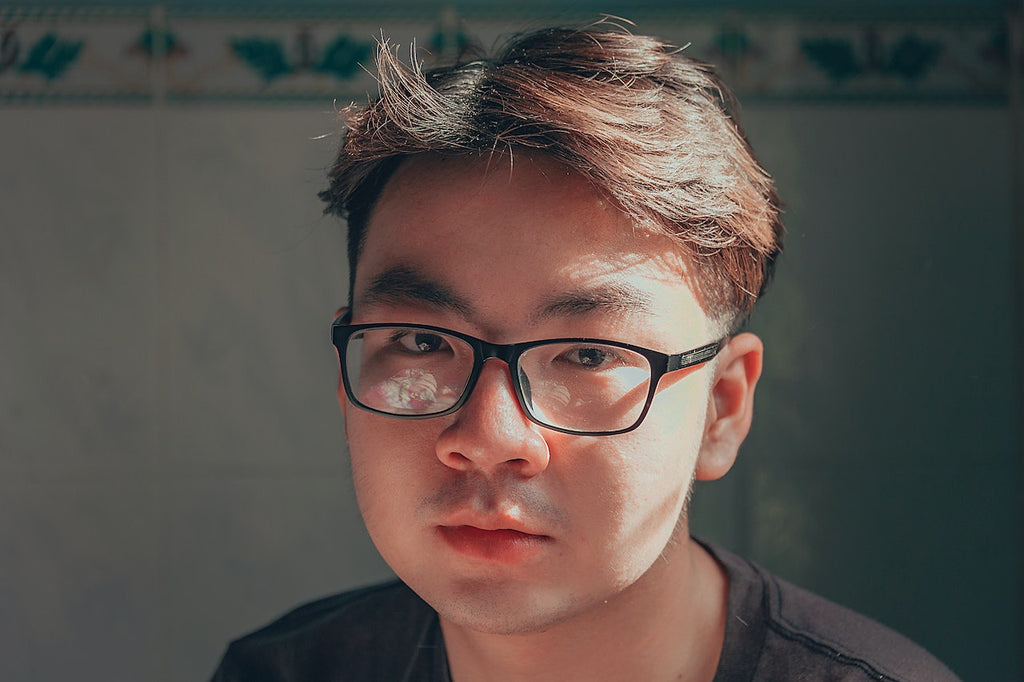
5 Possible Reasons Why You Can’t Grow Facial Hair
The challenge of growing lush chin hairs may become more pressing as beards become more popular. Unsurprisingly, those without the beard gene are looking for the elusive chin carpet.
Many men either cannot grow a beard or have sparse facial and neck hair. Although it happens frequently, there are various causes. And there are solutions if you are having trouble developing a beard.
Why, then, can some men not develop facial hair? Let's get going.
1. Genetics
Facial hair is greatly influenced by genetics, just like head hair is. A thorough investigation looked at how our DNA affects how we look. The growth of straighter head hair and sparser facial hair was linked to a variant of the EDAR gene. Both beard, brow density, and baldness were significantly correlated.
Another factor contributing to the importance of genetics in beard growth is the influence of genes on the production of male sex hormones. The AR gene produces androgen receptors, which are necessary for developing male sexual characteristics.
The response to androgens (such as testosterone) is reduced when androgen receptors are dysfunctional. This might have an impact on facial hair growth.
Despite your poor genetics, you can still grow a bushy beard with the help of specific treatments. But first, consider the other reasons your beard might grow slowly.
2. Low Testosterone Level
In some instances, low testosterone levels may promote facial hair growth. Deficient testosterone levels are associated with virtually no facial hair.
If your testosterone levels are low, you may experience irritability, low libido, constant fatigue, erectile dysfunction, difficulty building muscle, and increased body fat.
3. Low DHT Production
Beard growth is influenced by DHT production, similar to the most common type of hair loss in men, male pattern baldness. Approximately 10% of testosterone is converted into DHT (dihydrotestosterone). While testosterone is better known in its original form, DHT is significantly more potent and impacts hair growth.
The hormone has distinct effects on facial and head hair. DHT can inhibit hair growth. That explains why finasteride inhibits the enzyme that converts testosterone to DHT and is an effective treatment for male pattern hair loss.
In contrast to the scalp, DHT promotes hair growth throughout the body, including the beard, with a significant amount of DHT present in beard cells but not in scalp cells.
4. Alopecia Areata
Due to the autoimmune disorder alopecia areata, the body attacks the hair follicles. It may result in bald patches on the head and beard.
Alopecia areata does not have a known cause or treatment. Still, your doctor can suggest several options, including topical medications such as minoxidil, dithranol, corticosteroid creams, topical immunotherapy, steroid injections, cortisone tablets, oral immunosuppressants, and phototherapy.
5. Ethnicity
Your race may influence the growth of facial hair. The Mediterranean region's inhabitants can develop thicker beards than people from other areas.
Chinese men have less facial hair than Caucasian men, according to a Reliable Source's 2016 study. Compared to Chinese men, Caucasian men have more facial hair on their chin, neck, and cheeks.
The same study found that human hair can vary in diameter from 17 to 180 micrometers, affecting beard density. The thicker hair causes the beard to look fuller.
Conclusion
Though fashionable, not all men have facial hair that grows naturally. You might have trouble growing a beard for various reasons, but heredity is the most likely culprit. Some treatments can help you grow the beard you always dreamt of.
If you're looking for beard growth solutions at home, Tugain 10 has it for you! We have various products you could try and see what fits you! Get yours now!
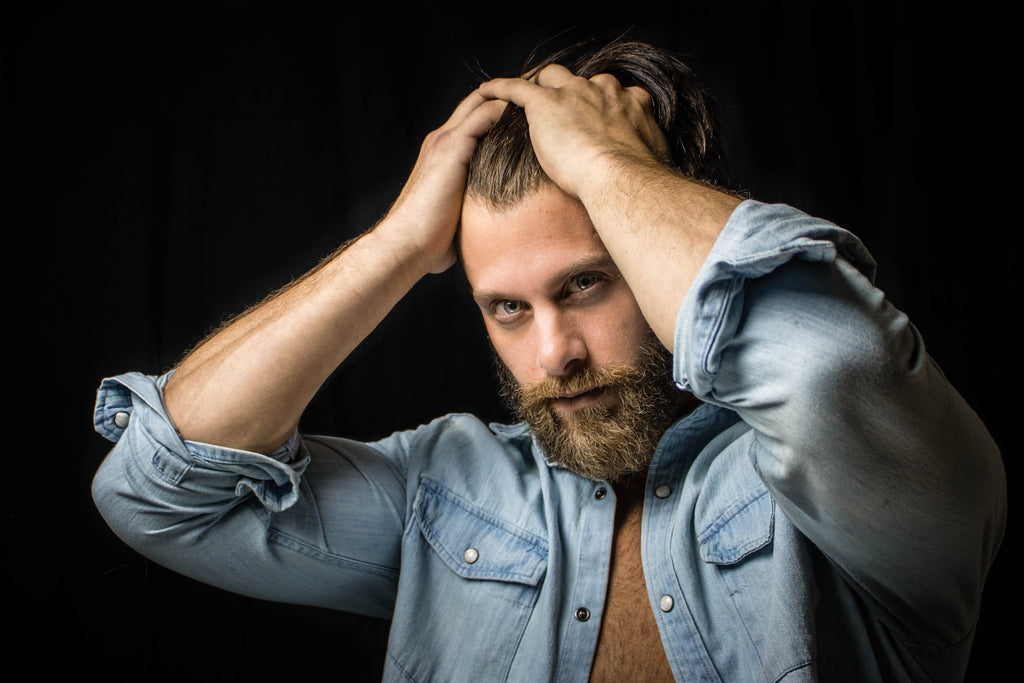
4 Effective Tips to Strengthen Aging and Thinning Hair
As we age, our hair often becomes thinner and weaker. While there is no magic solution to prevent this from happening, there are some things we can do to help strengthen and protect our aging hair.
Here are some practical tips to help strengthen aging and thinning hair.
1. Invest in the Right Hair Products
Investing in the right hair products is one of the best ways to combat thinning hair. Many products on the market claim to strengthen aging and thinning hair, but not all of them are created equal.
When choosing hair products to combat thinning hair, look for those that contain biotin, keratin, or other hair-strengthening ingredients. These ingredients will help to fortify your hair and make it less likely to break or fall out.
2. Eat a Healthy, Complete Diet
There are a few essential nutrients that are especially important for healthy hair:
- Protein: Hair is made mostly of protein, so it's important to get enough of this nutrient in your diet. Good protein sources include meat, poultry, fish, eggs, and dairy.
- Vitamin A: This vitamin helps to produce sebum, natural oil that keeps hair healthy. Good sources of vitamin A include liver, carrots, and spinach.
- Vitamin B: Vitamin B is essential for cell growth and healthy hair follicles. Good sources of vitamin B include meat, poultry, fish, eggs, and dairy.
- Vitamin C: This vitamin helps to produce collagen, a protein that gives hair its structure. Good sources of vitamin C include citrus fruits, tomatoes, and broccoli.
- Zinc: This mineral helps to keep hair follicles healthy and is necessary for cell growth. Good sources of zinc include meat, poultry, fish, and eggs.
- Iron: This mineral is necessary for cell growth and is important for keeping hair follicles healthy. Good sources of iron include meat, poultry, fish, and beans.
- Healthy Fats: Healthy fats are important for keeping hair moisturized and preventing dryness. Good sources of healthy fats include avocados, nuts, and seeds.
3. Wash Your Hair Less Frequently
Washing your hair less frequently is better for aging and thinning. When you shampoo, it can strip away the natural oils that protect your hair. This can leave your hair feeling dry and brittle and can damage the hair shaft.
Washing your hair less frequently will help to preserve the natural oils in your hair and will make it stronger and healthier. If you have particularly oily hair, you may need to wash it more frequently, but cleaning it every few days is fine for most people.
4. Ask Your Doctor for Possible Medications to Strengthen Aging and Thinning Hair
Aging and thinning hair is a common issues for many people, but there are ways to combat them. One option is to ask your doctor for possible medications to strengthen your hair.
A few different types of medications can be used to help with aging and thinning hair. One option is minoxidil, which is a topical solution that is applied to the scalp. Minoxidil can help to stimulate hair growth and also help to thicken existing hair.
Another option is finasteride, which is a pill that is taken orally. Finasteride works by blocking the production of a hormone that contributes to hair loss. This medication can be effective for both men and women.
Final Thoughts
There are many things you can do to strengthen aging and thinning hair. If your hair loss is severe, you may want to talk to a doctor about other treatment options, such as medication or surgery.
If you want to try out a hair regrowth minoxidil, check out Tugain 10 today. Tugain 10 offers products that will aid your hair — in your beard, scalp, and eyebrows. Explore our selection and place your order today!

The Science behind Beard Growth and Its 4 Major Phases
Growing a beard is not as easy as it looks. It takes time, patience, and a lot of upkeep. But if you're willing to put in the work, you can have a beard that will make you look and feel your best.
Today, we'll explore the science behind beard growth and the four beard growth phases.
The Science Behind Beard Growth
Beard growth is primarily controlled by two hormones: testosterone and dihydrotestosterone (DHT). Testosterone is the primary male sex hormone and plays a key role in many aspects of male health, including muscle growth, bone density, and sex drive. DHT is a more potent form of testosterone, and it's thought to play a role in hair loss.
Interestingly, both of these hormones are present in both men and women. However, men tend to have much higher levels of testosterone and DHT, which is why facial hair is mostly a male trait.
The 4 Major Growth Phases of Beard
Beard growth occurs in four distinct phases: the anagen phase, the catagen phase, the telogen phase, and the exogen phase.
1. Anagen Phase
During the anagen phase, your hair follicles are constantly growing, and your hair is growing at its fastest rate. The anagen phase can last anywhere from 2 to 6 years, and the length of this phase will determine how long your hair will eventually grow.
2. Catagen Phase
The catagen phase is a transitional phase during which hair follicles start to shrink. This phase lasts for a few weeks, and it signals the end of the active growth phase.
3. Telogen Phase
The telogen phase is the resting phase during which hair follicles are inactive and stop growing. This phase lasts for several months, and it's thought that the health of the hair follicle determines the length of the telogen phase.
4. Exogen Phase
This is when the beard is fully grown in and is ready to be styled. The exogen phase can last anywhere from 2 weeks to 6 months. During this phase, the beard will continue to fill in and thicken.
The exogen phase is the best time to start experimenting with different styles and shapes for your beard.
Conclusion
The science behind beard growth is fascinating, and it is interesting to note that there are four major phases of the growth process: the anagen phase, the catagen phase, the telogen phase, and the exogen phase.
The anagen phase is when the hair follicles are actively growing. Then comes the transitional phase known as catagen, where hair follicles start to shrink. When the hair follicles stop growing, that is the start of the next phase, known as telogen. Finally, the exogen phase is when the beard is fully grown.
Understanding the science behind beard and its growth phases can help men better understand how to care for their beards and how to achieve the best results.
If you're looking for a beard growth product that contains active ingredients that are known to promote beard growth, then you may want to give Tugain 10 a try.

